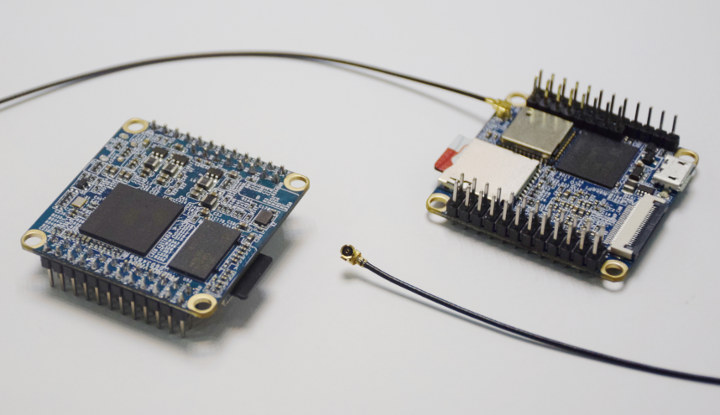NanoPi NEO Air is a tiny Allwinner H3 board with 802.11 b/g/n WiFi connectivity that launched in 2016 for $17.99 and is now available as NanoPi NEO Air-LTS (Long Term Support) for $28 and up.
A company – or group of software developers – called tinyDebian decided to create a clone based on NanoPi NEO Air design, but replacing the 2.4 GHz Ampak AP6212 802.11n WiFi + Bluetooth 4.0 LE module by a dual-band Realtek RTL8821CS module that supports 802.11 b/g/n/ac and Bluetooth 4.2 LE. Meet tinyWiFi-5G.
NanoPi NEO Air comes with two different storage configuration (8GB or 32GB flash), but tinyDebian did not provide the full specifications of the board, so tinyWiFi-5G board specifications below are preliminary:
- SoC – Allwinner H3 quad-core Cortex A7 @ 1.2 GHz with an ARM Mali-400MP2 GPU
- System Memory – 512 MB DDR3
- Storage – 8GB eMMC Flash + micro SD card slot
- Connectivity – Dual-band 802.11b/g/n/ac WiFi 5 and Bluetooth 4.2 LE via Realtek RTL8821CS module, IPEX antenna connector
- USB – 1x micro USB OTG port, 2x USB via headers
- Camera – 1x DVP camera interface
- Expansion headers
- 24-pin header with I2C, 2x UART, SPI, PWM, and power signals
- 12-pin header with 2x USB, IR pin, SPDIF, and I2S
- Debugging – 4-pin header for serial console
- Misc – Power and status LEDs
- Power Supply – 5V/2A via micro USB port or VDD pin on the serial header
- Dimensions – 40 x 40 mm
- Weight – TBD, but less than 10 grams
The company points to FriendlyArm Wiki for documentation, so the board – including WiFi – must be working out of the box with the original NanoPi Neo Air Ubuntu 16.04 firmware image. If not, you may have to install a specific driver for RTL8821CS.
Getting 5GHz will cost you however, as provided they only use an 8GB eMMC flash, tinyWiFi-5G board is sold for $59 on Tindie, meaning you pay over $30 extra for the new wireless module, and that does not take into account the $19 asked for DHL shipping. Furthermore, If you take a close look at the photos on Tindie website, you’ll find out they did not even bother to take photos of their own board, and instead, are using NanoPi NEO Air photos with an AP6212 module. Hopefully, the price will come down, as they aren’t that many compact low-cost boards with 5GHz WiFi.
Thanks to Theguyuk for the tip.

Jean-Luc started CNX Software in 2010 as a part-time endeavor, before quitting his job as a software engineering manager, and starting to write daily news, and reviews full time later in 2011.
Support CNX Software! Donate via cryptocurrencies, become a Patron on Patreon, or purchase goods on Amazon or Aliexpress





